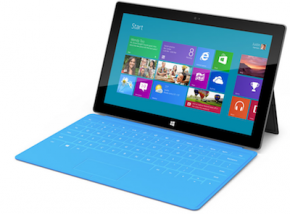
Warning: this post is going to have a lot of conjecture, since it’s incredibly difficult (if not impossible) to get official sales numbers out of a lot of companies. And some companies (ahem, Apple) have a tendency to claim they are experiencing supply problems because demand is so great — presumably to create the illusion that they’re product is super hot. So while we may not be able to figure out exactly who has sold what, we can still try to make a few educated guesses about how the devices are performing.
Nokia Lumia
If you do a quick search, you’ll see plenty of articles saying “The Nokia Lumia 920 is out of stock!” But that’s not actually helpful – we still don’t know how many phones actually sold, or why they’re out of stock. It’s not a number, but BGR is reporting that the Lumia 920 was AT&T’s third-selling phone behind the iPhone and the Galaxy SIII in November. But According to the Wall Street Journal (subscription required), as of the bginning of December the Lumia has barely sold 100,000 units in China, the biggest smartphone market in the world. That’s troubling for the Lumia, since 100,000 units is nothing, and anecdotally China has quite a bit of interest in the phone, at least compared to here. Bottom line: the Lumia is not the hit Nokia hoped for, but it’s doing OK, and it will keep Nokia in the game until they can release their next device.
Microsoft Surface
It seems like a lot more time and effort has been put into figuring out how well Microsoft has been doing with the Surface. Not great, seems to be the consensus. AllThingsD reported that Microsoft is estimated to have sold somewhere between 500,000 – 600,000 units during Q4 of 2012. That’s half the amount of units Microsoft was initially predicting to move. And since Q4 includes holiday shopping, so any numbers moving forward are likely to be substantially lower. It’s probably not a good sign when even Steve Ballmer is describing sales as “modest.”
What’s the bottom line?
Most small businesses can continue to ignore the mobile experience on both the Surface and Windows phones. Unless your business is all about mobile, it’s probably not worth spending the cash to have apps developed for either Windows RT or Windows 8. It sounds harsh, but until there’s an uptick in users and demand, there are almost certainly better ways to use your (finite) resources.